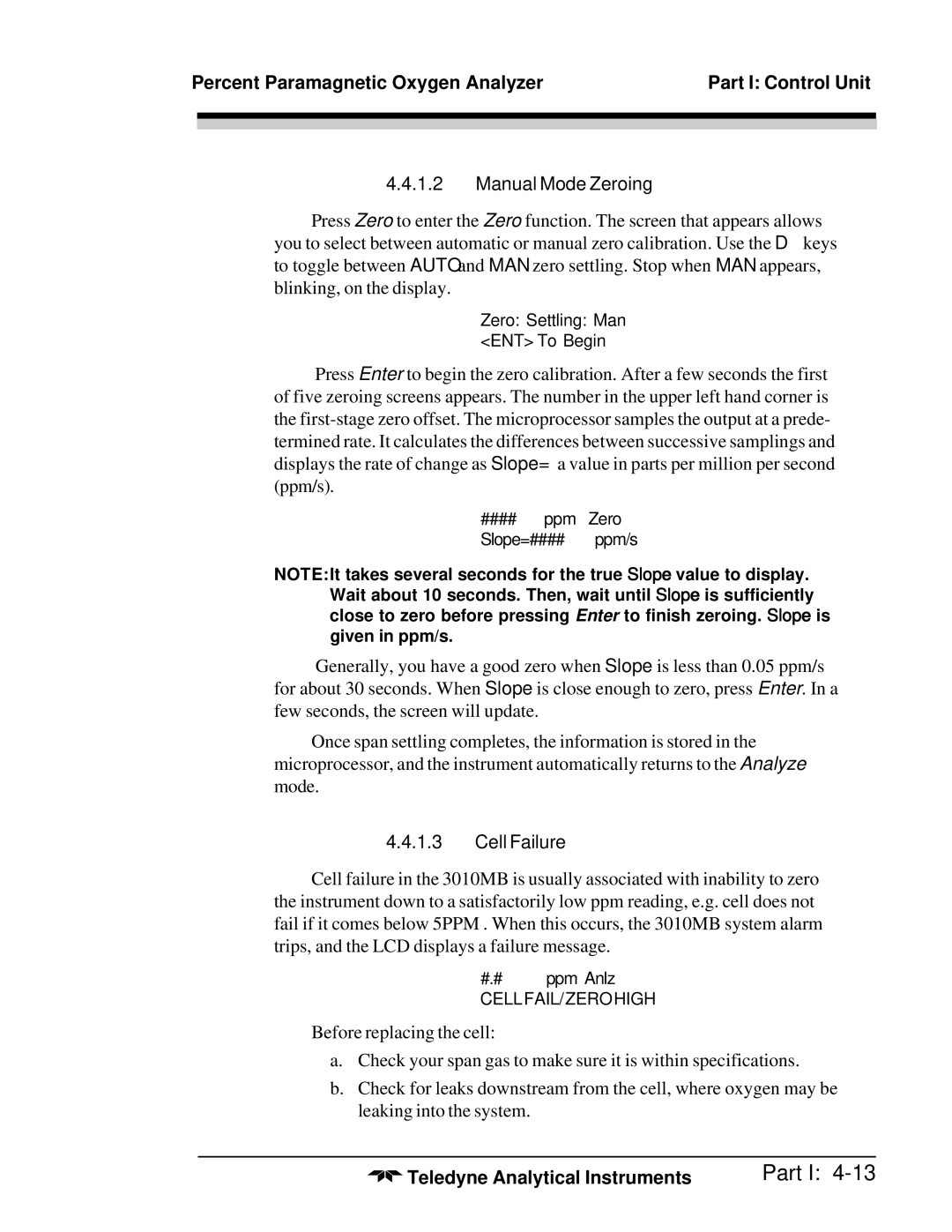3010MB specifications
The Teledyne 3010MB is a cutting-edge instrument designed for the analysis of various gases in a multitude of applications. It is renowned for its reliability, accuracy, and advanced features that cater to diverse industrial needs. This sophisticated gas analyzer is particularly favored in environmental monitoring, process control, and emissions measurement sectors.One of the main features of the Teledyne 3010MB is its ability to measure gaseous components such as carbon dioxide, methane, and various other hydrocarbons. Its robust design is complemented by state-of-the-art technology, ensuring consistent performance even in challenging environments. The analyzer leverages a microprocessor-controlled system, which allows for real-time data processing and enhanced operational efficiency.
The Teledyne 3010MB employs advanced infrared (IR) measurement techniques, providing superior sensitivity and specificity compared to conventional methods. The optical system utilizes a multi-path sample cell, which significantly increases the interaction of light with the sample gas, thereby improving the detection limits. This feature is particularly useful when dealing with trace gas measurements, where minute concentrations need to be accurately quantified.
Another key characteristic of the 3010MB is its user-friendly interface, which facilitates ease of operation. The large, graphic LCD display provides clear readouts of measured concentrations, operational status, and diagnostics, enabling operators to quickly interpret data. Moreover, intuitive menus and controls streamline navigation, reducing the learning curve for new users.
For data management, the Teledyne 3010MB offers comprehensive connectivity options. It can interface with various data logging systems and can be integrated into existing monitoring networks. This adaptability enhances its functionality, allowing users to easily collect and analyze data over time.
Furthermore, the device is built to withstand harsh operating conditions, featuring durable materials and a design that minimizes maintenance requirements. Its compact footprint makes it suitable for installation in limited spaces, while its versatility accommodates both laboratory and field applications.
In summary, the Teledyne 3010MB stands out as a leading gas analyzer, boasting features such as precise infrared measurement technology, a user-centric interface, and robust data connectivity capabilities. Its reliability and accuracy make it an invaluable tool for professionals in environmental monitoring and industrial process control, solidifying its reputation as a premier choice in gas analysis.
